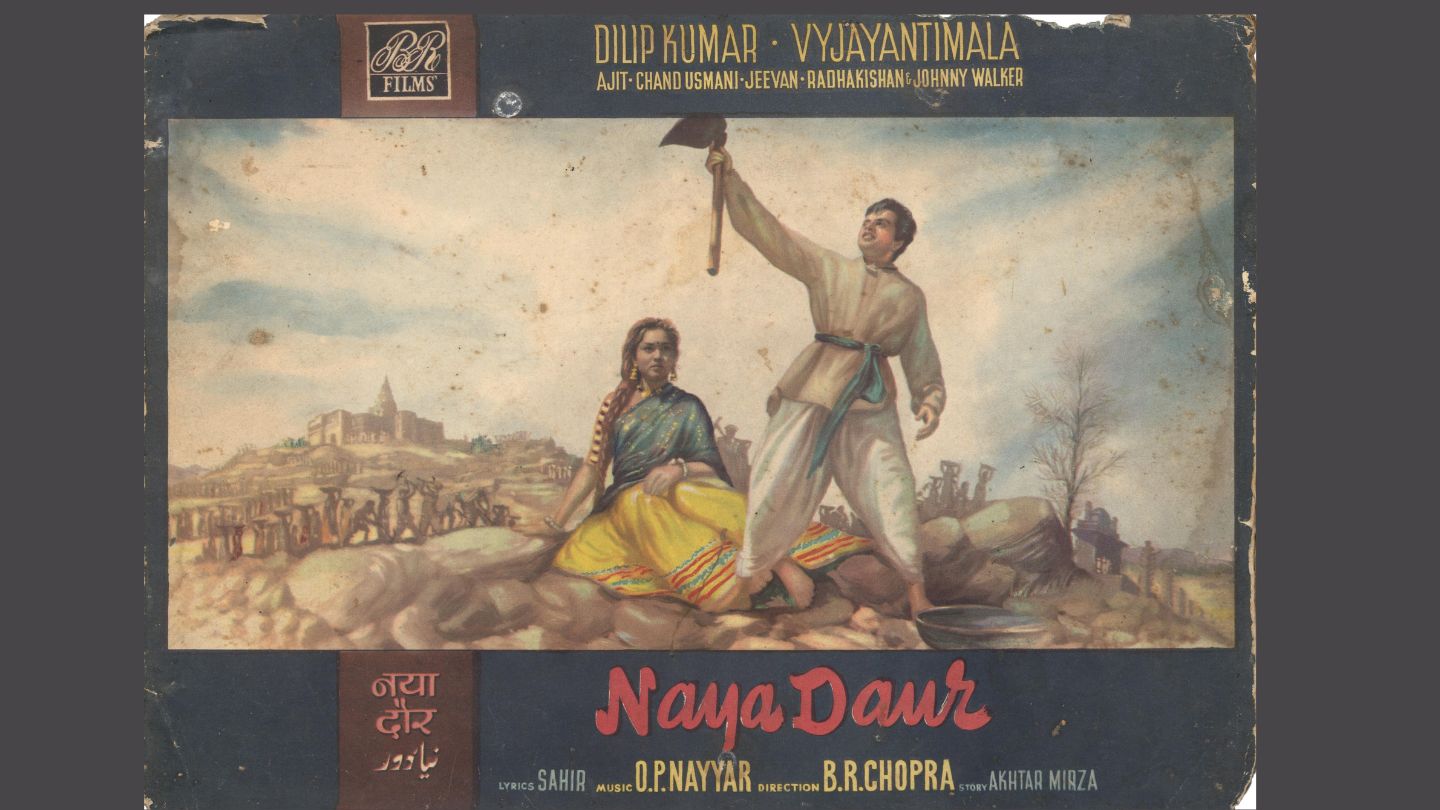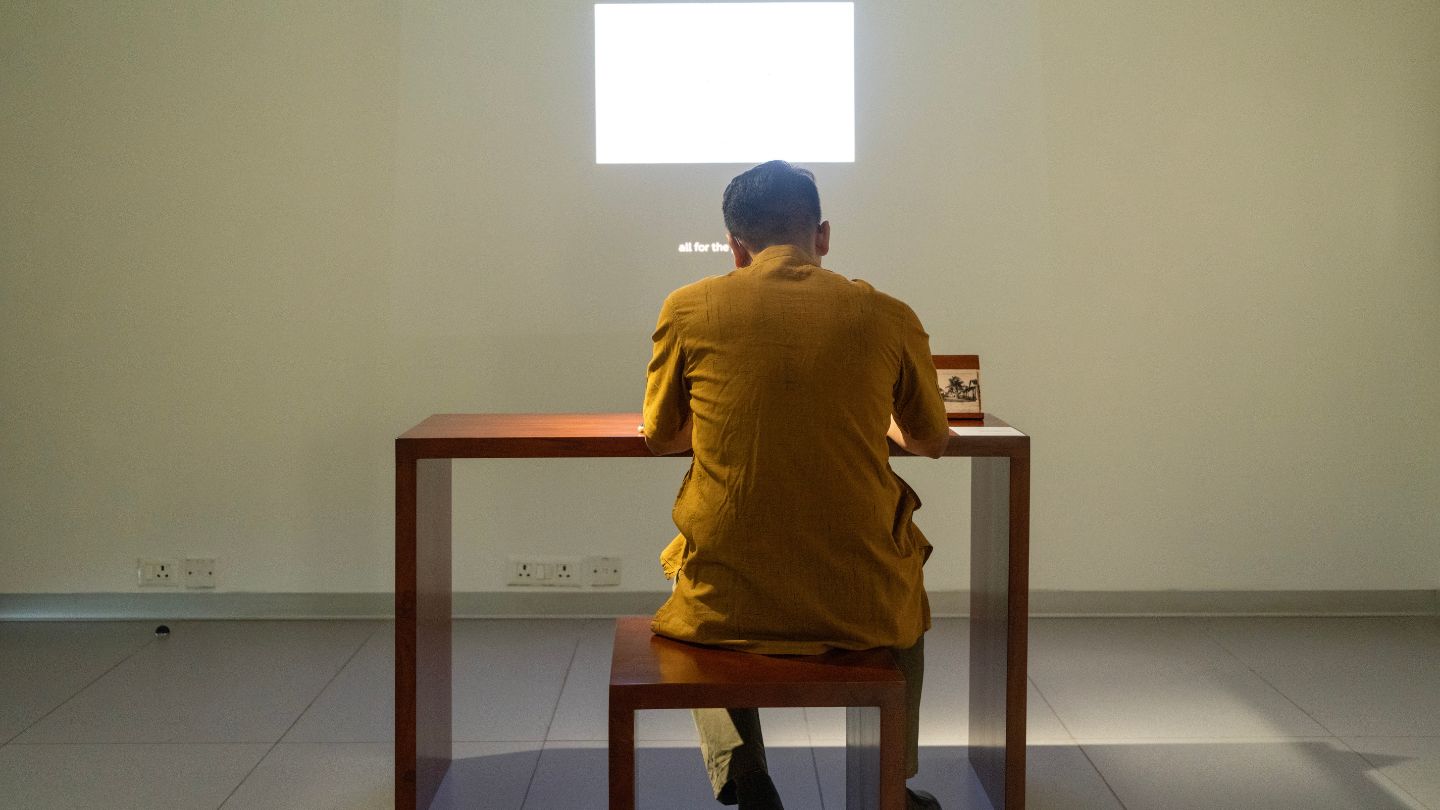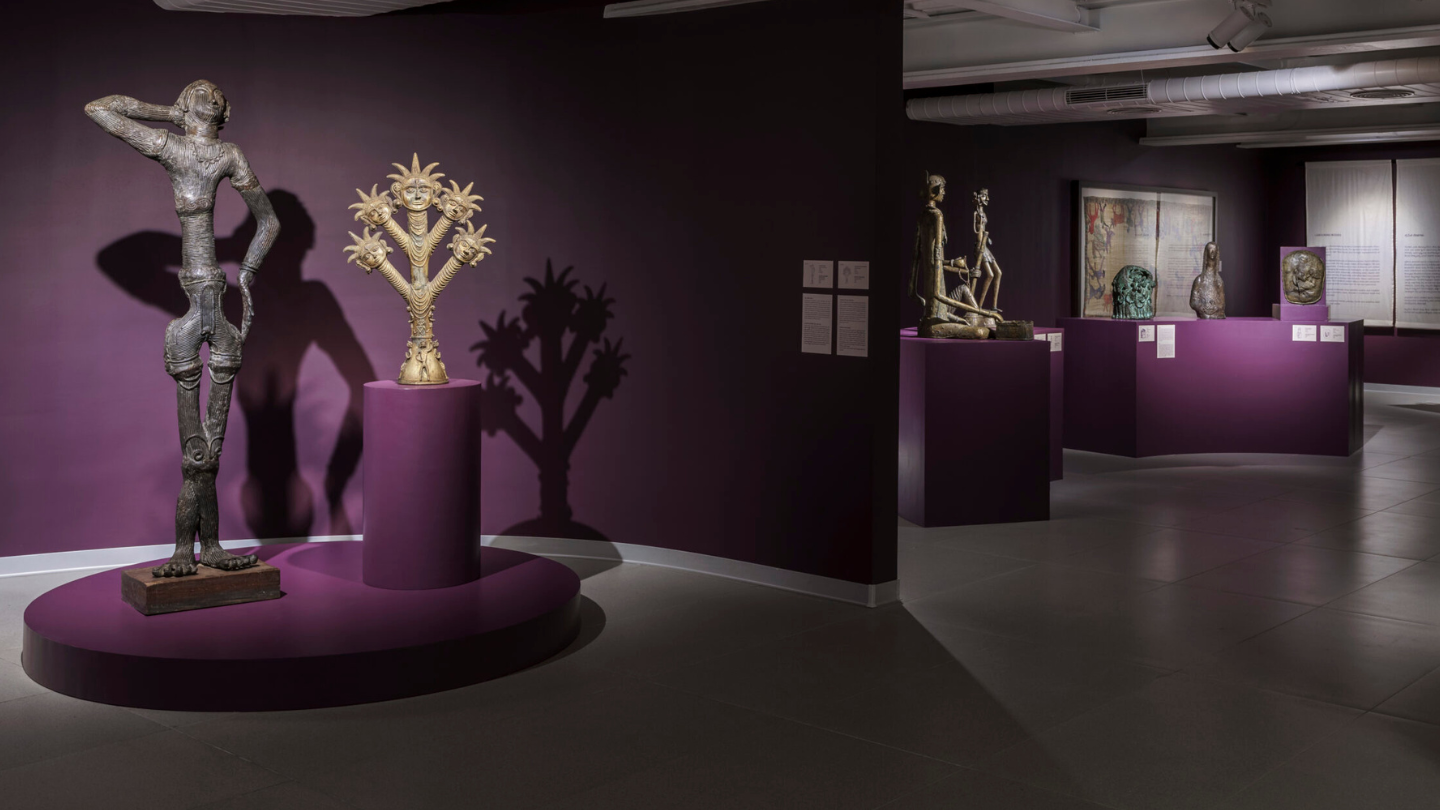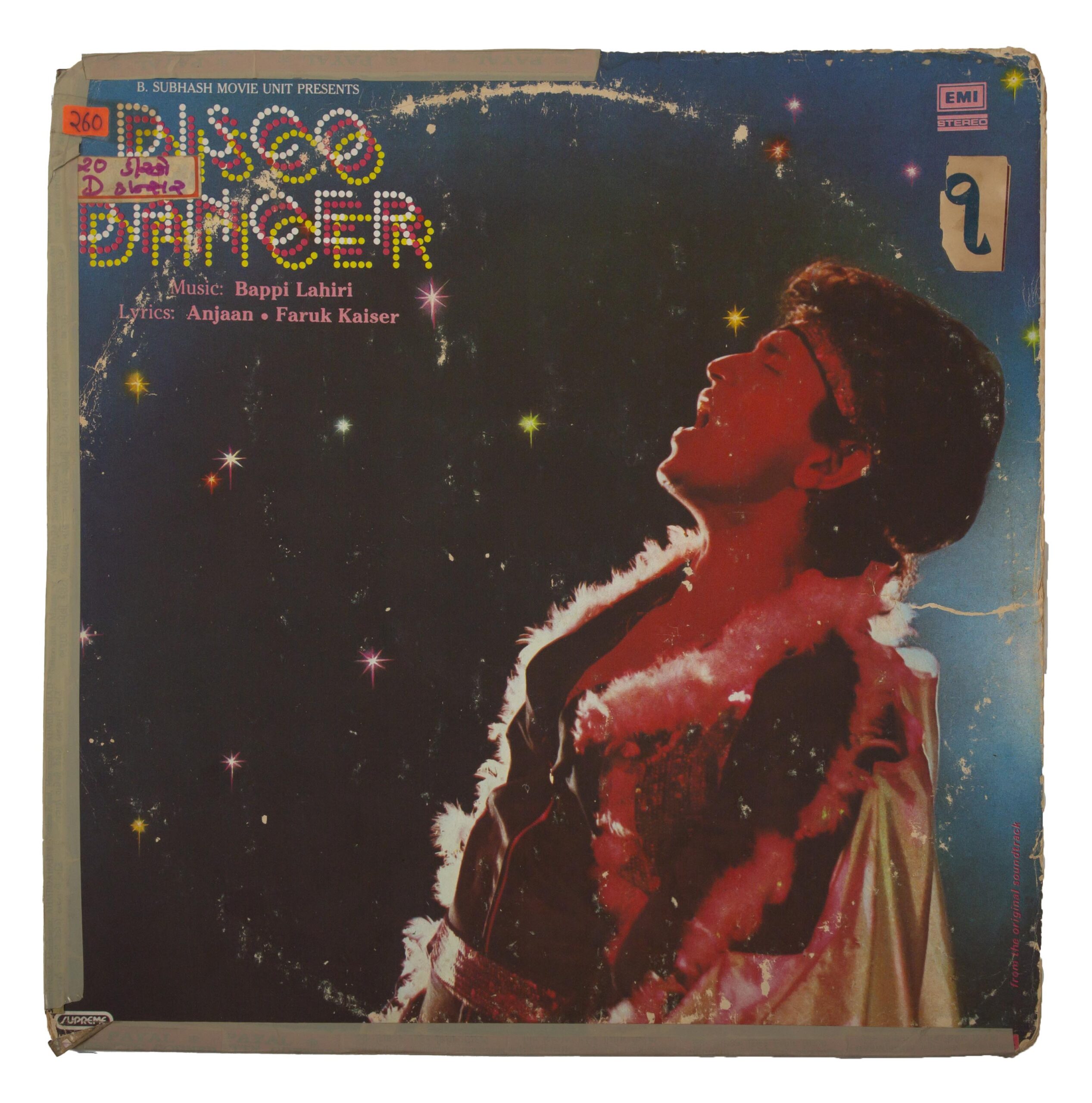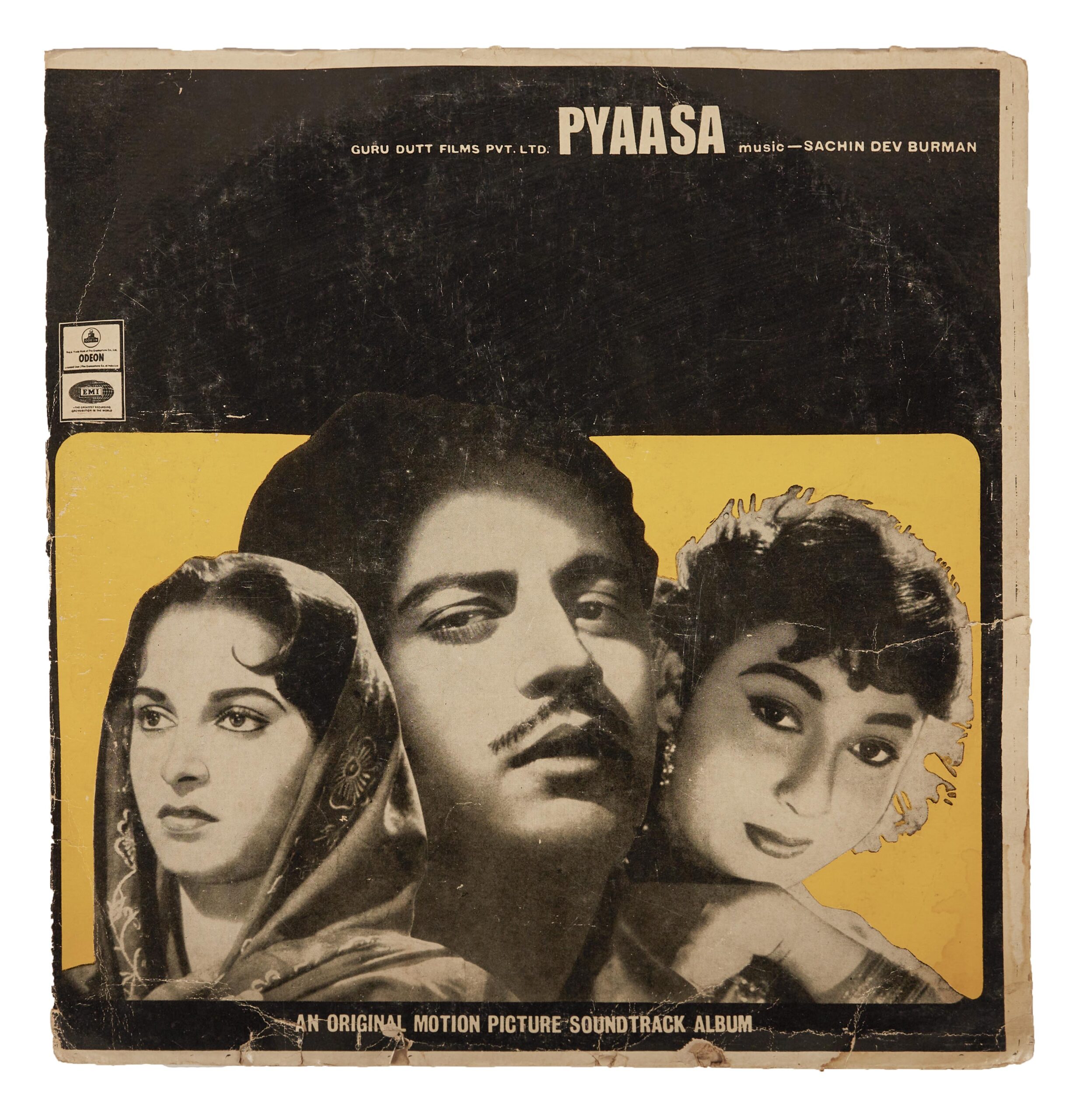Essays
Magic of Making at the Faculty of Fine Arts
Kadamboor Neeraj
Looking at K. G. Subramanyan’s contributions toward developing a pedagogical ideology for the Faculty of Fine Arts in Baroda, this essay touches upon Subramanyan’s view of the arts as a broad spectrum of engagements, as opposed to one that is tailored for the white cube.
The need to make special, if put very simplistically, is behaviour so innate to the human being that its manifestations can be seen across history, be it in the progression of the history of art as we know it, or in bringing out the best tableware for a special dinner guest. K. G. Subramanyan’s approach to art tapped into this behavioural trait – this natural need to “make special.”
In over two years since the onset of the Covid-19 pandemic, and the art economy having been forced to rethink formats and formulas of production and exhibition, writing about K. G. Subramanyan is an especially important exercise. As accessibility and representation come to the fore, occupying a prominent space in discourse, Subramanyan’s writings, particularly the essay Magic of Making, become ever more important resources.
In the Magic of Making, Subramanyan talks of artisans who don’t view the material that they work with as purely physical matter, but rather as what he calls ‘living plasma’, which is moulded and shaped to create dynamic, sensuous objects, seemingly capable of not only evoking emotion but emoting themselves. I’d like to extend this magic of making a bit further to align with Ellen Dissanayake’s nomenclature of humans as Homo Aestheticus. Dissanayake argues that from pre-historic times, human beings have been naturally attracted to things that are extraordinary. In her interview with Suzi Gablik, Dissanayake clarifies that to understand this behaviour, one needs to look beyond the peculiarities of Western notions of art – quite like how Subramanyan seeks to find clues in the traditions of craftspeople and rural artisans.
An example of this can be seen in the production of goods for the Fine Arts Fair. The Fair is a flagship event of the Faculty of Fine Arts, The Maharaja Sayajirao University of Baroda — the college campus gets transformed into a mela1 with students putting up stalls selling artisanal goods, puppet shows and movie screenings, and many other activities for the visitors to participate in. The very first Fair was organised in 1961 by Sankho Chaudhury (sculptor, and the head of the Department of Sculpture at that time) to raise funds by selling students’ past examination works which had been taking up storage space in the Faculty. Since then, a lot that has happened at the Fair bears the stamp of K. G. Subramanyan’s intervention.
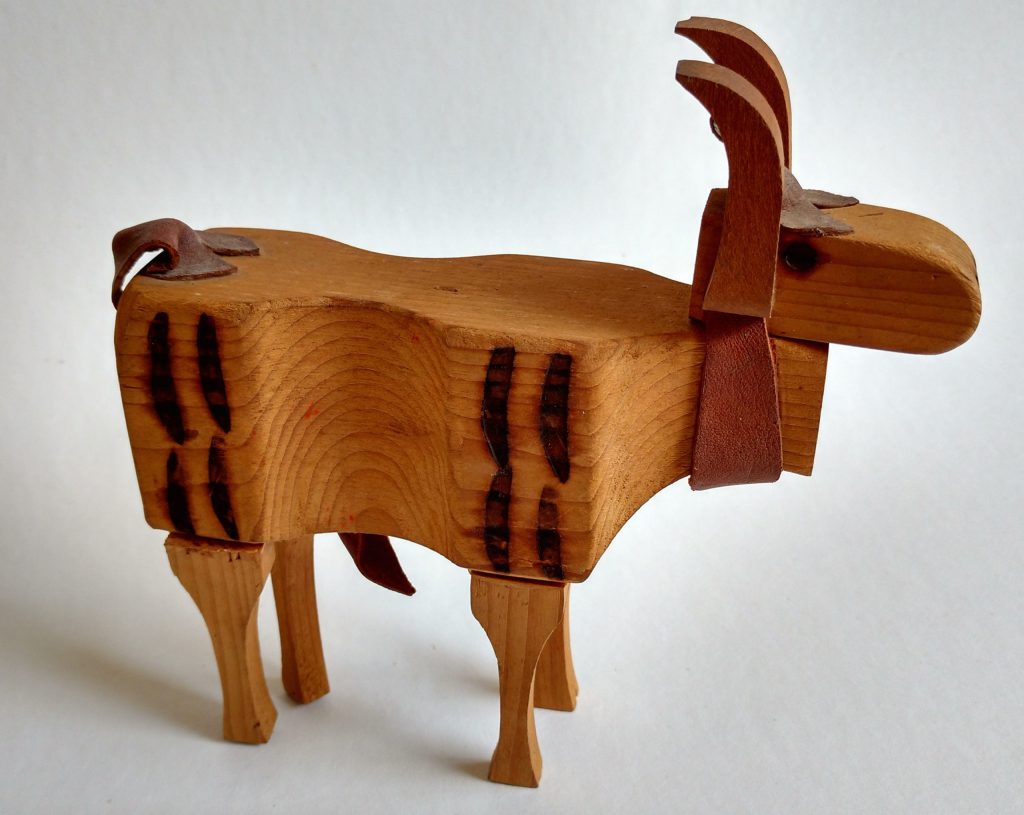
Wooden toy designed by K. G. Subramanyan for the Fine Arts Fair. From the collection of the Department of Painting, Faculty of Fine Arts, MS University of Baroda.
Subramanyan’s introductions to the Fair — the painted saras, or tavdis2 as they are known in Baroda; the toys; publications he designed — were all made with a specific intent: to make objects that were easily recognisable and relatable that would allow the local community to interact with the art school and take home art that was really affordable. Opening up the Faculty of Fine Arts on the days of the Fine Arts Fair presented an opportunity to broaden the scope of art and artistic production and extend the magic of making into the lives of the lay public.
What Subramanyan brought to the Faculty of Fine Arts, and to the city of Baroda at large, through his pedagogical modes, interventions at the Fine Arts Fair, and various public art installations, was a broader view of the arts — that sources can inform art outside of the academy, and that the consumership of artistic production can expand beyond the scope of the gallery and its sales chains. Great value seemed to be placed on looking beyond the formal academic modes of instruction.
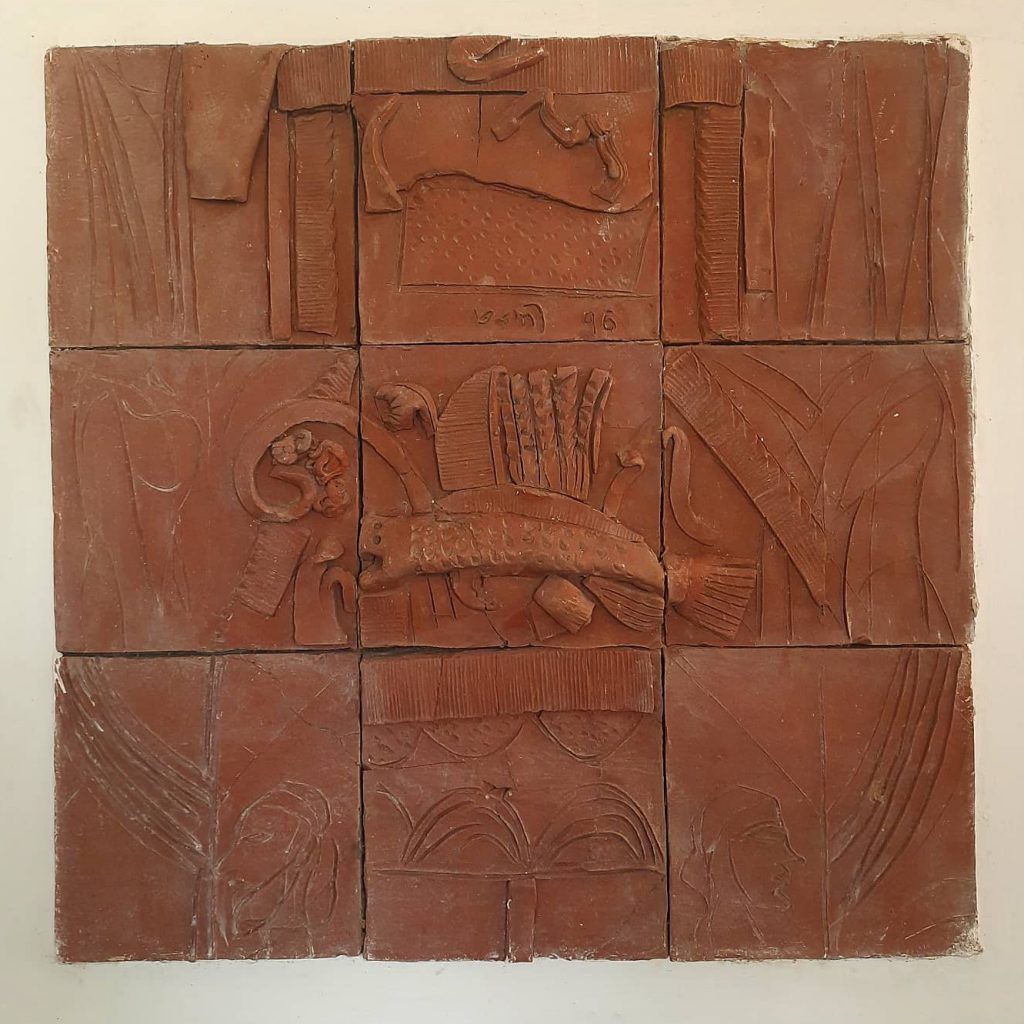
Terracotta Mural by K. G. Subramanyan at the Faculty of Fine Arts, Vadodara
An example of such a contribution, where one sees Subramanyan’s acknowledgement of innate sensitivities of artisans was the recruitment of Gyarsilal Varma — a traditional mural artisan who Subramanyan met at the Banasthali Vidyapith in Jaipur — to head the mural department at the Faculty. Despite having no formal training in the arts (and hence not technically being eligible to head a department), Gyarsilal was the ideal choice for Subramanyan because of his background in crafts and incomparable knowledge of traditional techniques of mural design, upholding the belief that craftspersons’ role in pedagogy within a school of fine art is essential.
In valuing the sensitivity inherent in traditional crafts and arts and attempting to remove them from the hierarchies of the market, and in expanding the field of artistic production to include everyday objects and reimagining the ownership and dissemination of art, Subramanyan’s mode of pedagogy was designed on a modernist view that sought to redefine notions of indigeneity and creativity. My experience of K. G. Subramanyan has been one handed down through anecdotes recalled by professors and other senior artists, through his writings (which are even prescribed in our reading lists), and most importantly, through the experience of the structure and functioning of the Faculty of Fine Arts as a whole. The pedagogical model instituted by Subramanyan has undoubtedly over the years evolved into the version we see today, with the contribution of many teachers who have taught after him. However, in learning from teachers who had once learnt from him, I was able to discern a very distinct sensitivity towards art-making.

Woman with Cows by K. G. Subramanyan, c. 1970, Terracotta, H. 52 cm x W. 50 cm, MAC.01146
What has become very clear is that in learning from Subramanyan, through the institution and through the artists he had taught, one begins to view art, its purpose, and its affect in very different ways. One begins to allow oneself to think beyond notions of commodity, commerce, ownership, and specialisation, and view the creative process not as a result-oriented, production-driven art-making, but as artistic behaviour – a tendency or pattern that defines the approach towards any situation.
I’d like to end this article with an anecdote that Sashidharan Nair M, my professor, recalled of K. G. Subramanyan. Upon being asked his views on being rooted and retaining a nationalist and regional identity amidst a global economy, Subramanyan is said to have replied simply by saying, “a good seed will root anywhere.”
mela – a public event that is organised to celebrate a special occasion or an event where goods can be bought and sold.
sara or tavdi – a concave, circular utensil used to cook rotis and such flatbreads.
Kadamboor Neeraj is a visual artist, researcher, and writer based out of Vadodara, Gujarat. Neeraj’s interests lie in modern and contemporary South Asian art, and he is currently researching alternative pedagogical models in art schools in the region with a particular focus on fairs and melas in these institutions and how they have shaped their histories and social identities.
References
Subramanyan, K. G. The Magic of Making,Seagull Books, Calcutta 2007.
Gablik and Dissanayake, What is Art For, in Gablik, Conversations Before the End of Time, Thames and Hudson, London, 1995.
Sheikh, Nilima. A Post-Independence Initiative in Art, in Contemporary Art in Baroda (Ed. Sheikh,Gulammohammed), Tulika, New Delhi, 1997.
Siva Kumar, K. G. Subramanyan: The Painted Platters, The Guild, Mumbai.

